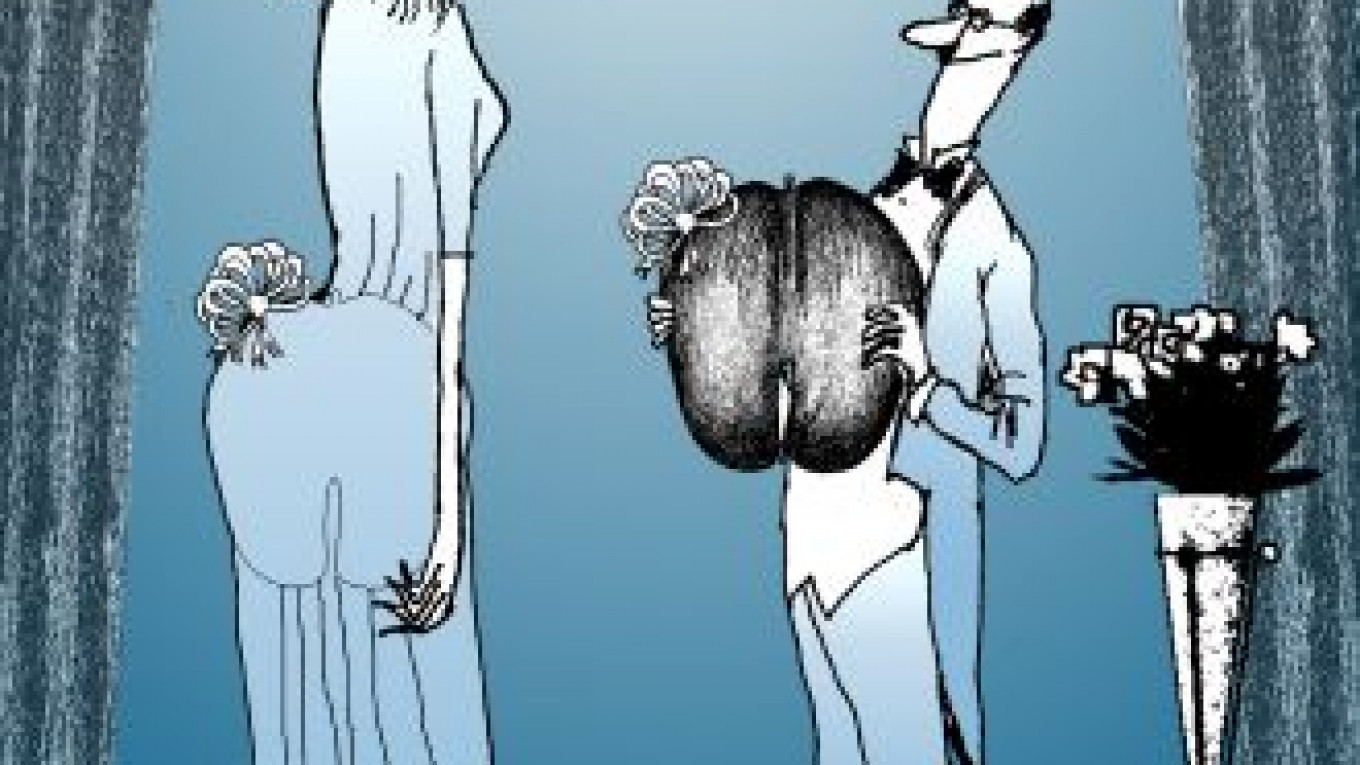Olga is selling a Lodoicea callipyge for 60,000 rubles ($2,000), which, if you know your Ancient Greek, is something with a large bottom. A nut, in this case.
Her nut is the famous Coco de Mer, a rare double coconut that grows on a palm tree that is apparently only found on a couple of islands in the Seychelles and in Olga’s flat.
The nut is said to have been discovered sometime before the 16th century when it was spotted floating in the sea. Its particular shape had sailors remark to one another — in a way phrased no doubt in a purely botanical context — that it resembled a pair of woman’s buttocks, a rump without the rest.
The double nut is also referred to as the Sea Coconut, the Seychelles Nut and — these names you suspect came from the sailors — the Love Nut and the Bum Seed.
Olga explained how the 40-centimeter-long nut looks like a pair of “female buttocks” and how it would make an excellent present for a female friend.
She wouldn’t quite explain how she ended up in the Seychelles, just that she was selling the nut because she needed the money.
There are a number of legends about the nut, the heaviest seed in the world. Often spotted floating in the sea, one myth was that it grew on a tree at the bottom of the sea that sent it up to the surface.
The source of the nut was only discovered in 1768, but this added to its legend. The nut grows on the female tree while the male tree has a particularly phallic catkin. The trees are said to uproot and meet for wild lovemaking at night. Anyone who sees the rampant trees is said to be doomed.
The nut itself had long been prized by kings, emperors and lucky Moscow holidaymakers. A Holy Roman Emperor bought one for 4,000 gold florins in the 16th century, which is still less than what Olga is asking for now.
Biologists gave the nut the botanical name of Lodoicea callipyge: “Lodoicus” is in honor of King Louis XV, also a nut, and “callipyge” is a combination of the Greek words for “beauty” and “rump.”
It is used when talking about a certain type of lamb with particularly oversized thighs, but the term is better known when used in reference to a marble statue of a woman looking back and down at her naked behind.
The Venus Callipyge is an ancient Roman statue, now on show in the archeological museum in Naples, that still brings droves of admirers of buttocks.
One 19th-century writer wrote that a guardian was needed to protect it.
“Even this precaution has not prevented the rounded forms which won for the goddess the name of Callipyge, from being covered with a dark tint, which betrays the profane kisses that fanatic admirers have every day impressed there.”
A Message from The Moscow Times:
Dear readers,
We are facing unprecedented challenges. Russia's Prosecutor General's Office has designated The Moscow Times as an "undesirable" organization, criminalizing our work and putting our staff at risk of prosecution. This follows our earlier unjust labeling as a "foreign agent."
These actions are direct attempts to silence independent journalism in Russia. The authorities claim our work "discredits the decisions of the Russian leadership." We see things differently: we strive to provide accurate, unbiased reporting on Russia.
We, the journalists of The Moscow Times, refuse to be silenced. But to continue our work, we need your help.
Your support, no matter how small, makes a world of difference. If you can, please support us monthly starting from just $2. It's quick to set up, and every contribution makes a significant impact.
By supporting The Moscow Times, you're defending open, independent journalism in the face of repression. Thank you for standing with us.
Remind me later.






